
Andre Russell has returned to the game after his ban arguably the best T20 batsman in the world. How does he do it? CricViz analyst Ben Jones doubles down on the numbers that tell the story, for Wisden.com.
CricViz are cricket intelligence specialists
Often, when players are banned, they return a shadow of their former selves. The teenage sensation Mohammed Amir has never quite burned as brightly since his return to the international game. Sunil Narine came back into the fold with an action missing the bite and snap of old. Even after just six months out of the game, Ben Stokes looked a little ring-rusty when he made his England return in New Zealand. For finely tuned athletes, routine and consistency are fundamental, and any disruption to this can have a huge negative impact.
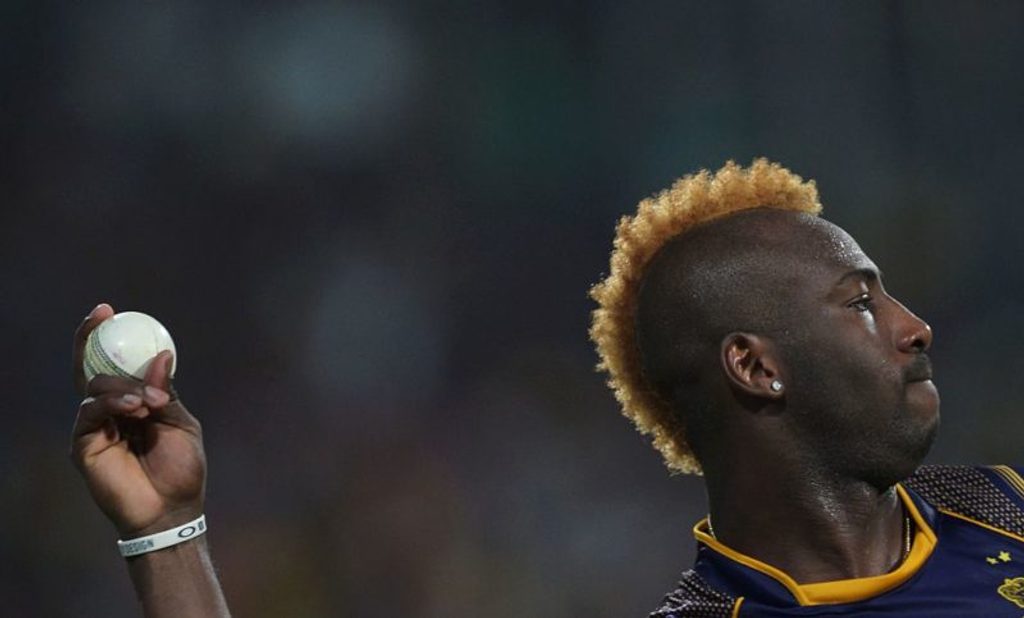 Russell has made an impressive impact since his return
Russell has made an impressive impact since his return
Yet this hasn’t been the case for Andre Russell. Banned for one year for missing a series of doping tests, the Kolkata Knight Riders all-rounder has come back from his ban to take this IPL season by storm. After two weeks, he sits fourth in the run-scoring charts even after not batting in the win over Rajasthan Royals, and his scoring rate of 14.34 runs per over (pro) is the fastest of anyone to face 10 or more balls. Despite making his initial return to the game for Islamabad United in the Pakistan Super League earlier this year, the early stages of the IPL were always likely to be the litmus test of whether Russell was at the standard he set before his absence, and the answer has been an unequivocal yes. In fact, there is an argument that the Jamaican has returned better than before.
More than before his absence, Russell is opting to hit the seamers with no footwork at all
Of course, Russell has always been a rapid scorer in T20 cricket – a career scoring rate of 9.96rpo is testament to that – but since he’s returned from his ban, the West Indian has scored at 12.86rpo, and seems to have taken his game to the next level. KKR’s defeat against CSK was in spite of an extraordinary knock from Russell, a sparkling 88* (36) which almost single-handedly dragged Kolkata to a competitive total. So what’s changed in his game?
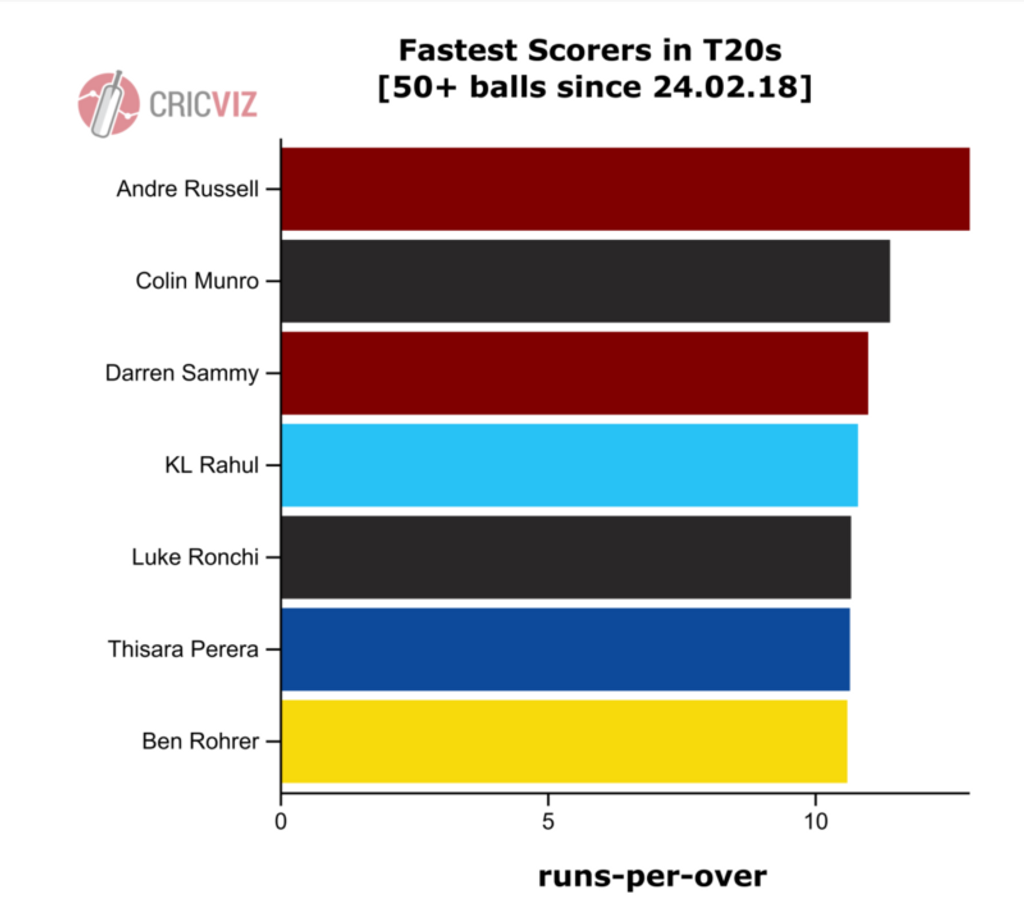
The most fundamental technical change to Russell’s game seems to have been an increase in the number of shots he’s playing with no foot movement, particularly against pace. Whilst conventional wisdom may argue that decisive shifts in weight onto the front or back foot would aid strong strokeplay, Russell has been working with Jacques Kallis specifically on hitting from a strong base, with little weight transference. That work in the nets has certainly translated onto the pitch; far more so than before his absence, Russell is opting to hit the seamers from a stable base, with no footwork at all.
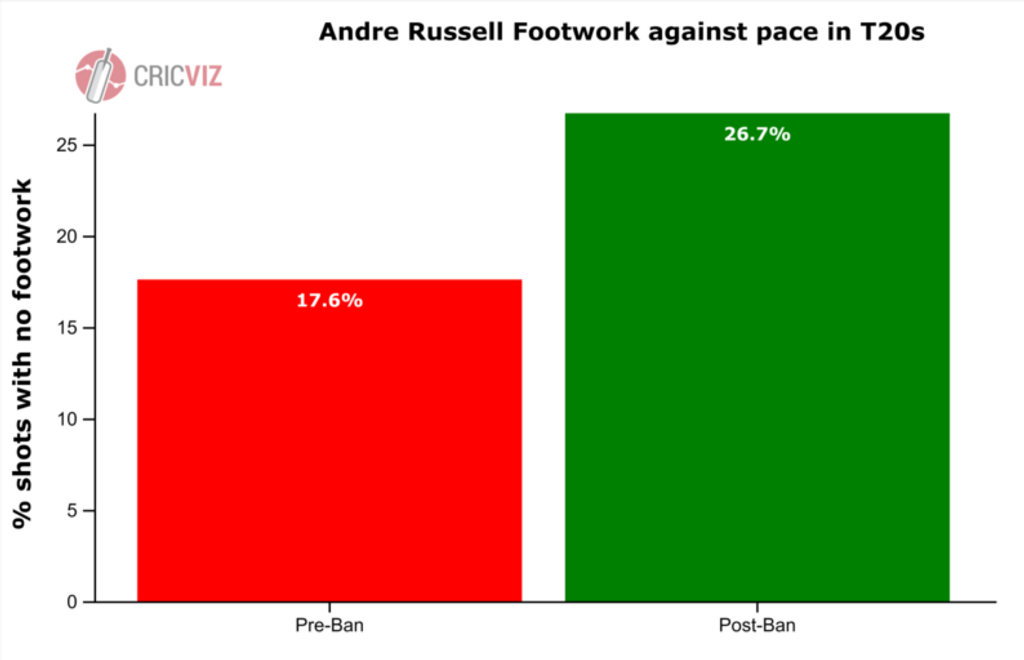
Perhaps as a consequence of this change in footwork, there has also been a change to the areas in which Russell is scoring. Before his ban, 26 per cent of Russell’s runs were scored behind square, which compared to the average (33 per cent since the start of 2016) isn’t particularly notable, albeit lower than most.
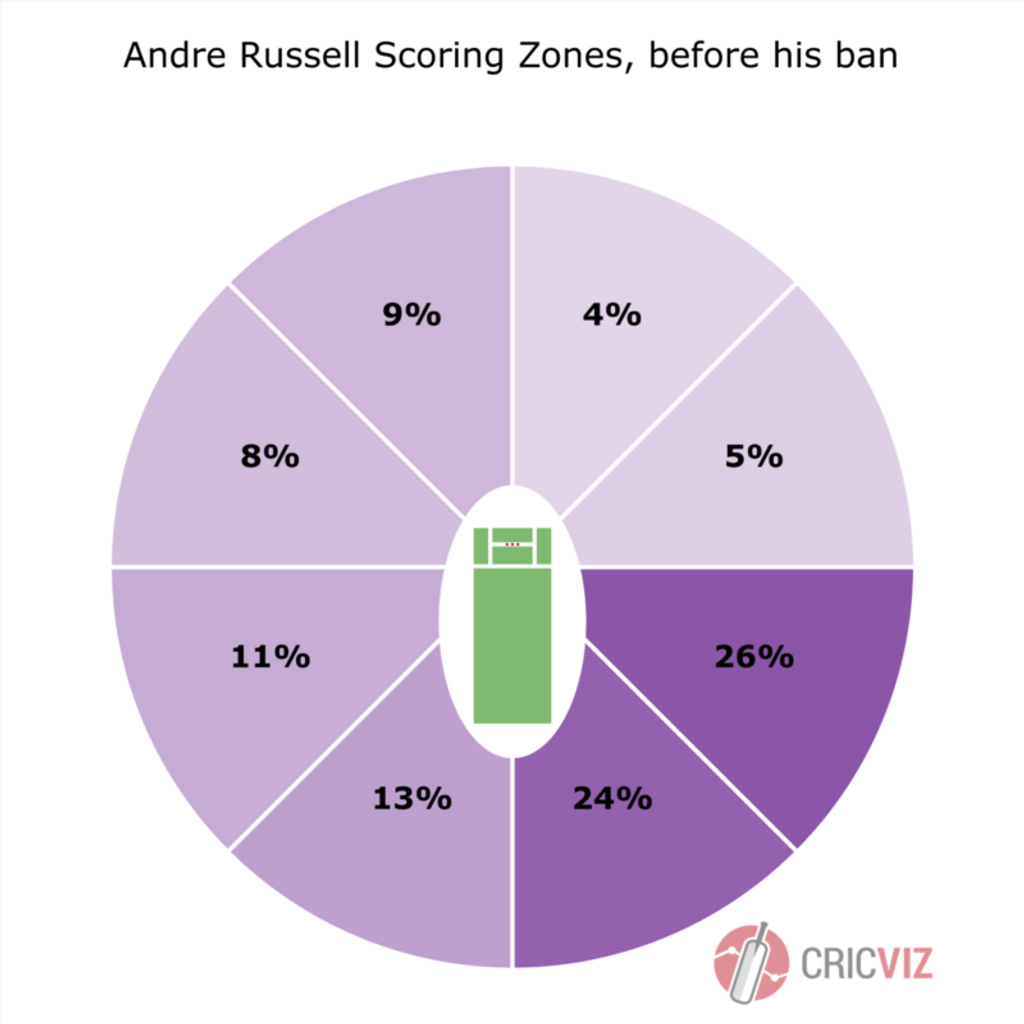
However, the changes to his game have all but eliminated the area behind square as a scoring option for Russell. Since returning, just 12 per cent of his runs have been scored behind square, with a much greater focus placed on scoring through the covers, in front of point on the off-side.
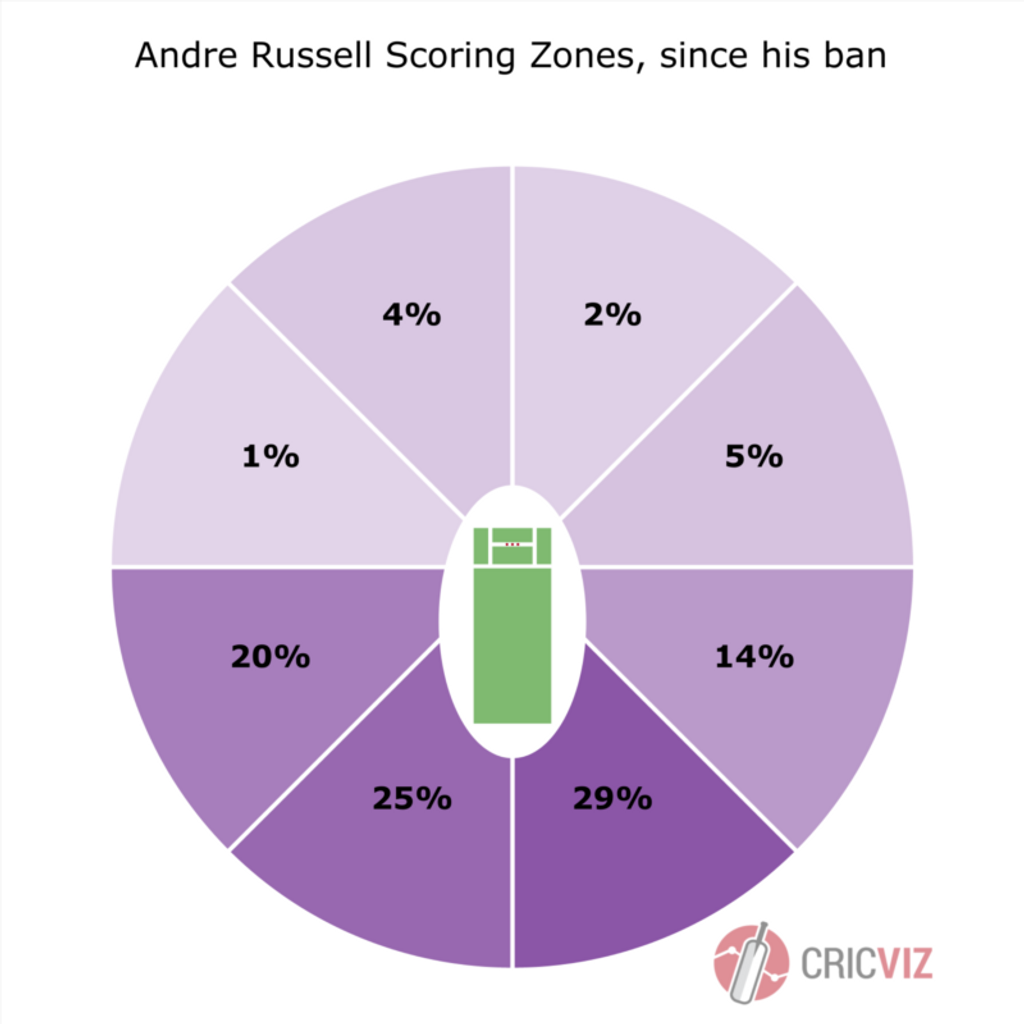
All of these alterations have clearly had a positive impact on Russell’s game, but one specific effect has been a refinement in his attacking efficiency. Since his return, Russell has averaged more with attacking shots, and has scored more quickly, than he did before his ban.
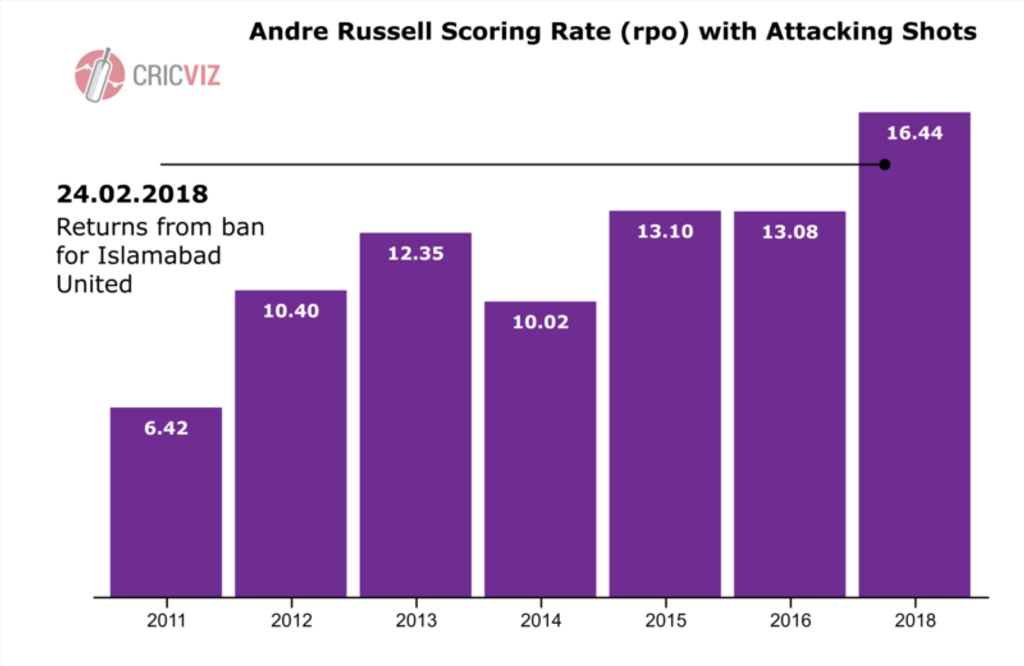
The changes in Russell’s footwork, and targeting particular areas on the field, seem to have boiled his game down to its strongest elements, focusing more than ever on boundary hitting. This stripped back, boundary-focused approach is particularly evident in Russell’s game against pace.
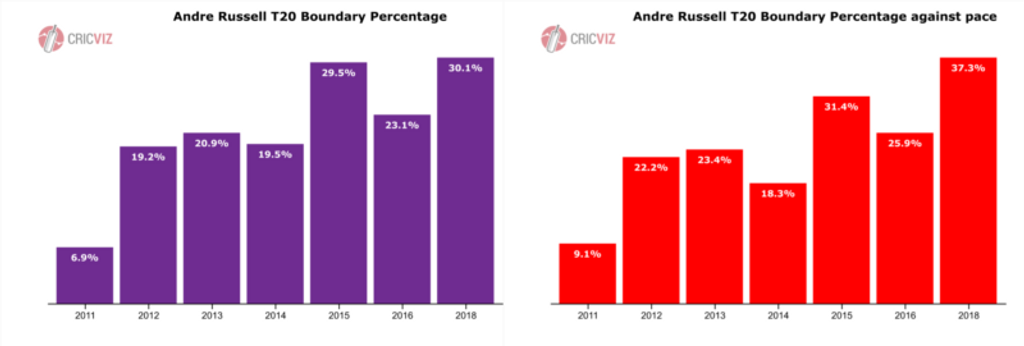
So, with all this in mind, how do you stop him? KKR are streaking away at the top of the IPL table alongside Sunrisers Hyderabad, and anyone who goes to Eden Gardens will know that limiting the impact of Russell is essential if they’re to claim victory. For the unlucky seamers who do receive the fateful wave of the hand from their skipper, and are forced to bowl to the big Jamaican, there is one overwhelming rule. Do not, under any circumstances, bowl full to Andre Russell.
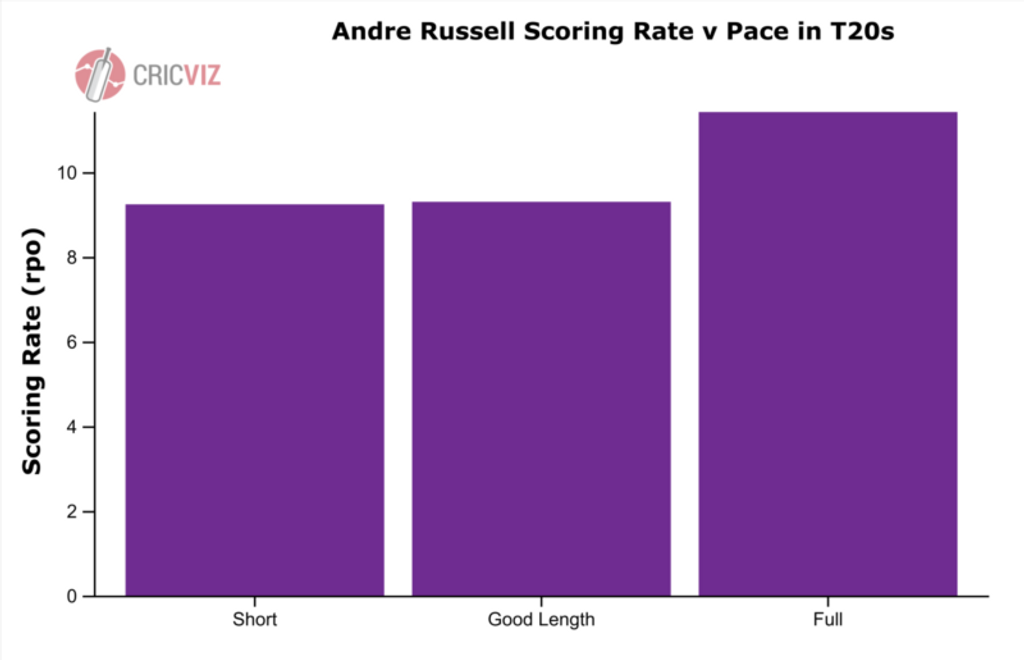
Both before his ban and since, he’s scored at a staggering rate against the full delivery, and simply scores rapidly against other lengths of bowling. Yet bowlers aren’t paying attention to this weakness in Russell’s game. Thirty-eight per cent of seam deliveries to Russell have been full of a good length, and he’s taken full advantage, scoring 50 per cent of his runs off those balls and scoring at a whopping 21.6rpo. Hitting a fuller length is unquestionably asking for trouble against Russell, and seamers need to adjust accordingly, and starve him of deliveries in his strong zone. Over time the lack of variation may cause issues, but given that Russell’s average innings since returning to cricket is just under 12 deliveries, it’s worth gambling on an informed short-term strategy.
But of course, with a record like Russell’s, any seamer is simply focusing on damage limitation – a wily skipper should know that the way to limit the effectiveness of Dre Russ is to bring in the spinners. Over a sustained period, he’s struggled against slower bowling; across the last four years, Russell has scored more slowly against spin than against pace (8.79rpo v 10.99rpo), and has averaged less (25.80 v 27.73). His batsmanship against pace is not without nuance, but his mighty physique lends itself most naturally to crunching seamers to the boundary, often (as we’ve established) in front of square. The counter balance to this strength seems to be a limited repertoire of shots against spin bowling – in the last four years he’s not played a single reverse-sweep, and has only played five orthodox sweeps. It seems to force him into playing the drive more than most (indeed, it’s his most common shot against spin), and he only averages 17.00 when doing so.
Equally, whilst spin is a long-standing weakness for the Jamaican, it’s one which has gone relatively untested since his return. Since his return, he’s only faced 16 balls of spin; he’s been out twice, and has scored just 10 runs. With KKR sitting pretty atop of the table, and the imbalance between bowling types being so stark, it’s not so much that you can gain an advantage by bowling spin to Russell, it’s that you can’t afford not to.
Regardless, the return of Russell to the game has been remarkable. Hitting his straps so quickly after a prolonged break is testament to his cricketing intelligence and understanding of the game, maximising the time away from the middle by tweaking his technique to make his power game more effective, and in the process he’s become, arguably, the best T20 batsman in the world.








